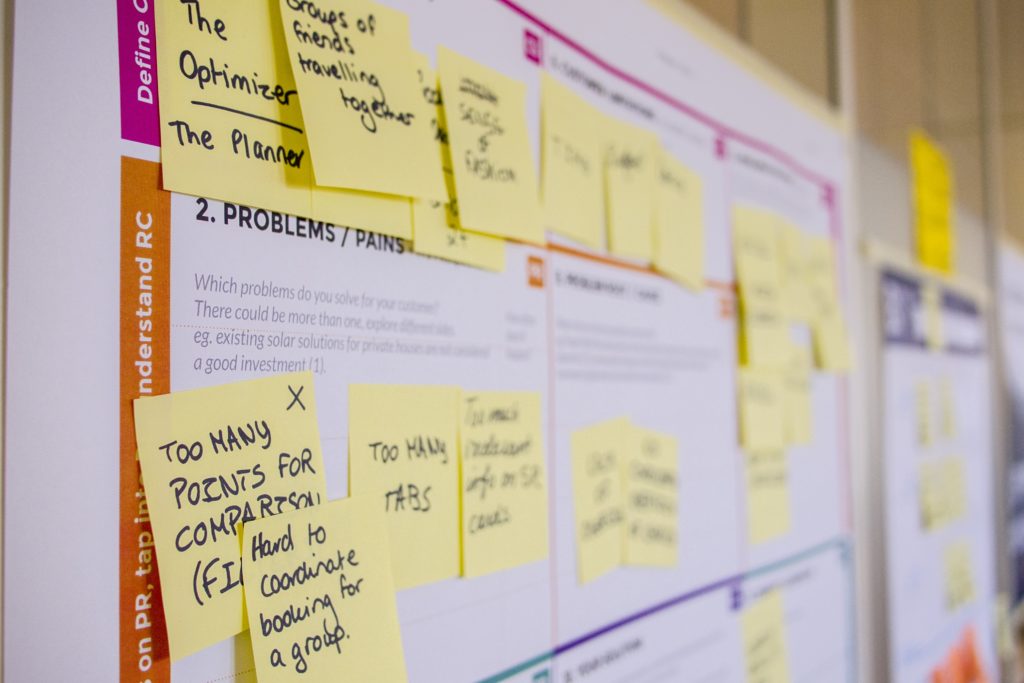8 ways you can measure company culture

While the performance of a company is easily trackable, how can you measure something as intangible as corporate culture?
When it comes to evaluating the culture of a workplace, it can feel so elusive that it’s impossible to assess. Some experts say that culture can’t be measured. The things that make up culture – its values, beliefs, and assumptions – cannot, and shouldn’t, be measured quantitively.
To many experts, culture should be treated as a barometer for behavior. People use this to decide what is acceptable. While one organization may provide the support and environment to report an error, another workplace may well encourage the covering up the mistake.
So, should culture be measured? Can it even be measured? As Claire Lew from Know Your Company says, “To say you want to measure culture is like saying you want to measure a compass. You could pick it up and say, “Hmm, let me rate the shininess of this compass, or weigh how heavy it is.” But, really, what you care about is if the compass points you to where you want to go. Measuring the compass itself doesn’t do you much good.”
Culture as an idea cannot easily be quantified, but a good company culture produces a set of behaviors that are trackable. The outputs of a healthy and productive company can be listed. These are the components that can be measured in a comprehensive way. And while culture per se cannot be measurable, these common traits can be indicative of a business which is in good condition.
1. Leadership

The best company cultures are most likely to have a strong tradition of leaders. These are the company’s most influential group of people – their behaviors, style of communication and approach to the inevitable highs and lows reinforcing the attitude of the rest of the organization. Leaders can inspire, create strong teams, contribute great interpersonal skills and motivate others. In short, they’re indispensable to an organization that wants to be the best it can be.
How to measure: Like culture itself, leadership can be challenging to measure, these roles stand for so much that merely measuring the financial effectiveness of each individual is not enough. Pulse surveys can be a great way of gaining feedback from employees, and questions can center around how the workforce regards leaders within the organization.
2. Communication

The health of any organization relies on good communication among its group of people. This, of course, covers written and oral, and a company who gets it right will ensure that all channels of communication are effective in helping every single member of staff – wherever they are – to send, receive and understand information.
How to measure: Because there are so many different ways of communicating, there are also many different ways of measuring. Intranets are useful to see how departments are communicating with each other, and how internal communications are being distributed and understood. Investigate work projects and see how people are communicating with each other and look at the tools which are being used to communicate, and by whom.
3. Wellness

Looking after your employees goes beyond providing them with a private healthcare package. Wellness accompanies the mind, body, and soul – and addressing mental health, offering new opportunities for development and providing enough breaks and annual leave days can contribute massively to employee retention, low absenteeism, and productivity. With a culture that practices care, staff can go to the right people to ask for support, help, and advice.
How to measure: When wellness is practiced, the results speak for themselves. A workforce who feels looked after has higher retention levels, lower absenteeism levels and are generally happier. When employers put a high priority on employee health has an enormous impact on the workforce. They return to work quicker, are more productive and save the company money in replacement and supply staff.
4. Agility

The oft-quoted, “This is the way we do things around here”, is used by organizations who cannot, and will not, move with the times. The most equipped businesses will be agile and have their eyes on the marketplace and their competition at all times. Acting on feedback, keeping the edge and continuously improving contributes to a culture that sees a company striving to be its best.
How to measure: Agility is used to describe a lot of things, but its essence is honing the processes and operations of the business. You can measure how agile your business is by measuring faster time scales, reduced customer complaints, better quality scores and see what improvements you’ve made in the interim.
5. Environment

Are your employees comfortable? Are there facilities to make tea, coffee, and cold drinks? Are there break out areas and places where people can make private calls? Adapting your office for the various needs of your workforce minimizes frustrations, limitations on productivity and increases overall workplace happiness.
How to measure: Opening up feedback is an excellent way of creating two-way communication in your organization. A suggestions box, or an employee forum on your intranet should welcome constructive criticism and positive feedback.
6. Vision

Does everyone in your company share the same vision? A healthy organization has its roots in a set of core values or maxims that define what it is they do, where they’re heading and what they expect of themselves and others. From mission statements to beliefs, your organization needs this guidebook to stay on track and teach staff members the essence of the company.
How to measure: Our clients, MidPen Housing, created an employee recognition program where they championed fellow staff members through their intranet by gifting them virtual keys. Each of these keys stood for a separate value of the company: Integrity, Collaboration, Accountability, Respect, and Excellence. Whenever they gifted a key, they would link one of these values via a hashtag. These values would then be totted up over the year, and intranet managers would not only be able to see who was the biggest contributor and beneficiary but also which values were the most practiced in the business.
7. Innovation

A desire for growth and success requires an appetite for innovation. And those businesses who exhibit innovation are the ones who are best at exchanging ideas, seize opportunities, make mistakes and learn from them and use those lessons to grow and develop. In many businesses, innovative leaps are down to the senior levels. However, in companies that embrace innovation in its culture, employees will feel inspired and supported enough to drive innovation themselves.
How to measure: There are lots of ways to measure innovation: is there a budget for research and development? Are financial returns being measured? Are incremental revenues analyzed? Is the best for the job software being used? Do staff use up to date on communication tools? Are everyday processes executed efficiently? By demonstrating innovation and providing the rights tools for innovation, employees will develop a mindset of curiosity and growth.
8. Social

Culture is significantly affected if your organization has a corporate social responsibility policy. Studies have shown that employees are more likely to seek companies with a strong CSR commitment. Feeling positive about the level of impact that their organization makes to the ‘greater good’ has been proven to drive higher levels of engagement, high-quality connections and drive creative involvement. Staff are happier, more innovative, and more committed to both their jobs and the organization as a whole.
How to measure: There are a number of tools with which to measure your business’s social impact. Some of them include social accounting and audit, which has been defined as a ‘systematic analysis of the effects of an organization on its communities of interest or stakeholders, with stakeholder input as part of the data that are analyzed for the accounting statement. The logic model is another way; this focuses on the outputs of the programs, rather than the outcomes.
Culture is the personality of a company, and like a personality, it is an amalgamation of many influences. It’s these influences that can be measured and the best companies work to determine what is successful in contributing to a workplace culture that is positive, attractive to outsiders and a driving force in employee satisfaction. Culture can be easily upset as people leave, join, are promoted and moved around. As such, culture cultivation is an ongoing process that requires effort and commitment, but as all the best organizations demonstrate, it is a process that will always deliver significant results.
